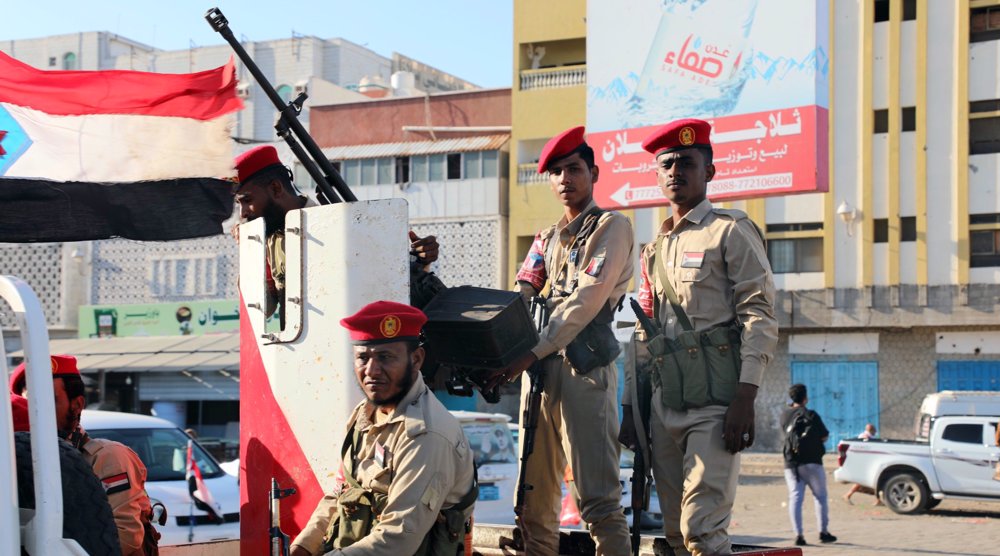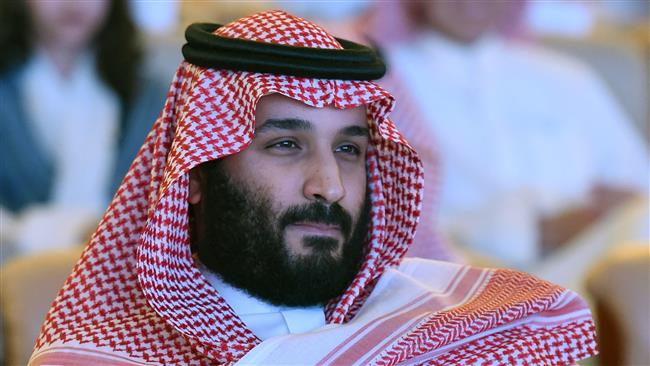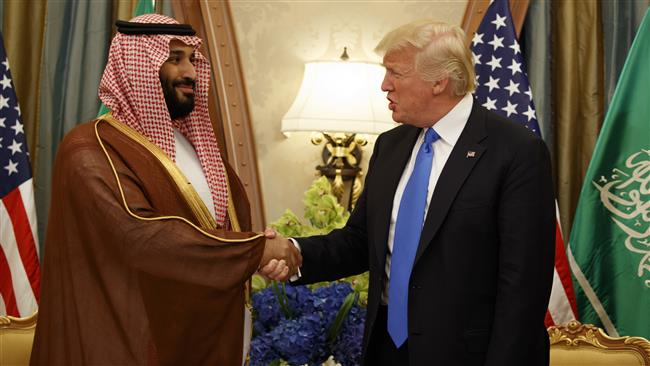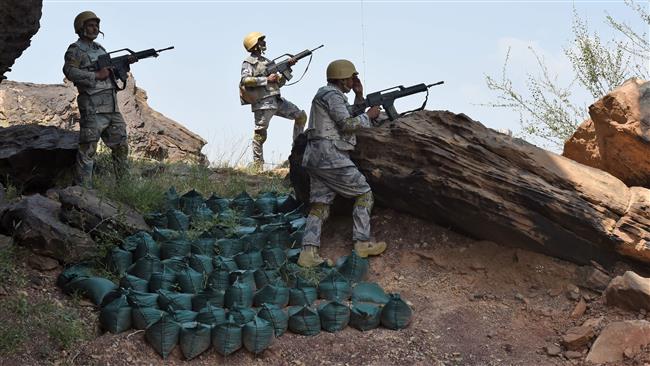All the Saudi shenanigans
By H. Javan
Saudi Arabian leaders must be thinking too highly of themselves. Starting on Saturday, they have picked up several fights at home and abroad, significantly ratcheting up tensions for themselves and in a region known for its explosive qualities.
First, Crown Prince Mohammed bin Salman and a coterie of loyalists launched a new round of arrests to take out potential challengers to his ambitions for the throne, attempting to portray as an anti-corruption fight what is really a political purge.
Then, they had Saad Hariri resign as prime minister of Lebanon, plunging the delicate political balance that had just emerged there into uncertainty. Then they claimed that a missile fired by the Yemeni Houthis at Riyadh had been an Iranian provocation, escalating tensions by hinting that they might take military action against Iran. Then they said the Lebanese government had also “declared war” on them because of “aggression” by Hezbollah.
It is all very warped, really, but let’s try to break it into ones and zeros.
All-out war at home
Saudi Arabia doesn’t really have a functioning political system as we know it. It has been an “absolute monarchy” since 1932, when its new ruling clan put its name on the desert country to make it “Saudi” Arabia.
The ruling family has since then expanded — exponentially. There are now roughly 15,000 princes and princesses in Saudi Arabia, where they had until recently been in some form of a power-sharing deal with the branch of the family holding the throne. Under that de facto agreement, and depending on their seniority levels, princes owned an oil well, held a marginal government position, or headed an important security unit, which gave them enough reason to feel satisfied until a day when, perhaps, luck would see them rise to the pinnacles of power.
That power-sharing pattern, however wobbly, is now being turned on its head. And the force behind that domestic upheaval is Mohammed bin Salman, the prince that happens to be all-powerful now and may move on to become king pretty soon.

The recent purge began on Saturday when King Salman decreed the establishment of an “anti-corruption” committee to be headed by Mohammed, his favorite son. Hours later, 40-plus princes, including Mohammed’s royal cousins, had already been rounded up.
More arrests and restrictions soon followed, and less than 24 hours later, it was evident that what the young prince was really doing was clearing his path to the throne. In fact, he was doing it so aggressively that a Saudi business leader supportive of his “anti-corruption campaign” worried the prince may be “fighting too many wars at once.”
Reckless foreign policy
Since the death of former Saudi King Abdullah, who himself wasn’t exactly moderate, Saudi Arabia has become a bastion of anti-Iran belligerence — crude belligerence. So much so that when Yemen — under military aggression by a Saudi-led coalition since March 2015 — fired a missile at Riyadh, Saudi officials came up with the curious claim that the missile attack had been “direct military aggression” and could constitute “an act of war” by Iran.
Saudi Foreign Minister Adel al-Jubeir said his country reserved “the right to respond in the appropriate manner at the appropriate time.”
Bend it like Saudi Arabia!
The Saudi-led coalition pounding Yemen had said on Monday Saudi time that it had intercepted the missile, launched by “the Iranian-controlled Houthi militias,” a day earlier. Some 24 hours later (on Monday US time), Jubeir said the missile had been fired by Hezbollah from inside Yemen.
“It was an Iranian missile, launched by Hezbollah, from territory occupied by the Houthis in Yemen,” he told the CNN.
Why the Saudis amended their story was not made clear, but they must have thought that making the even bigger claim that the Lebanese resistance movement also has a presence in Yemen would make their story catchier — as if there wasn’t enough drama already.
Here was another attempted spin, except that it was also a dangerous escalation. Terms like “act of war” and “direct military action” actually mean something. If it was an attempt at brinksmanship, the Saudi officials had clearly lost sight of the brink.
Or are they actually working to move the “battle” to Iran, as Mohammed bin Salman said earlier this year? Do they not know that if that happened, there would also be a battle for them to fight at home — in Saudi Arabia?
Of course, Iranian officials have denied the accusation of involvement in the Yemeni missile attack. Yemen has been under a land, aerial, and naval blockade by the Saudi-led coalition since the start of the war, and Yemeni officials have said they have been producing the missiles domestically. Saudi officials, nevertheless, seem to think their story is pitch-perfect.
The case of Saad Hariri
And then there is Saudi Arabia’s Lebanon scheme. Saad Hariri, the Lebanese prime minister, has long been a Riyadh favorite. And an agreement with political factions in Lebanon — including Hezbollah — that made him prime minister in 2016 couldn’t have pleased the Saudis. Yet, they somehow managed to get along. Until now that is.
Following two trips to Saudi Arabia in quick succession, Hariri abruptly announced from Saudi Arabia (on a third trip) that he was quitting because of what he said was interference by Iran and Hezbollah in Lebanese and Arab affairs.
Few failed to see Saudi Arabia’s hand. A Lebanese government minister announced President Michel Aoun would not be considering Hariri’s resignation until he returned and convinced the president that he had “voluntarily” decided to quit.
“The president is waiting for Hariri’s return to hear from him personally. This indicates a sovereign vision… and that the resignation must be voluntary in every sense,” Justice Minister Salim Jreissati said.

What the Saudis did not see coming was that Hariri’s decision to acquiesce to Riyadh could serve as a wake-up call to the Lebanese people, who should be able to see Saudi Arabia’s intentions for what they are: unfriendly and dangerous. With the decision to have Hariri quit at such politically delicate times for Lebanon, Riyadh proved that it was willing to let its antagonism toward Iran destabilize and endanger a fellow Arab country.
According to one report, Hariri’s supporters may already have an idea.
“Hariri didn’t do this for Lebanon, he did this for Saudi against Iran,” said Nabil Idriss, a resident of Tariq al-Jdeedeh, a mostly Sunni neighborhood of Beirut, where Hariri’s posters festoon the buildings.
Saudi Arabia did attempt to spin things here, too. In a bizarre attempt at pretending that Saudi Arabia wasn’t that cozy with Hariri, Saudi [Persian] Gulf affairs minister, Thamer al-Sabhan, ostensibly rebuked him for not having “contained” Hezbollah during his time in office.

Sabhan had threatening words for the Lebanese government and people, too.
The Lebanese government would “be dealt with as a government declaring war on Saudi Arabia” because of “aggression” by Hezbollah, he said. “Lebanese must all know these risks and work to fix matters before they reach the point of no return.”
Ask the Lebanese, and they will probably tell you that those remarks were uncalled for.

Meanwhile, US President Donald Trump has been using his own disruptive skills to stir up tensions. In fact, it wasn’t before he said that in his “opinion,” the firing of the Yemeni missile at Saudi Arabia had been an Iranian “shot” that the Saudi officials scrambled to blame Iran.
And it was only after his son-in-law, Jared Kushner, took an unannounced trip to Saudi Arabia and stayed up until 4 am “planning strategy” with Mohammed bin Salman that Hariri put out his statement of resignation.
Hariri announced his resignation in Riyadh, in footage broadcast by a Saudi-owned television. He then traveled to the United Arab Emirates — a Saudi ally and vassal state — and then back to Riyadh. And he blamed Iran and Hezbollah for interfering in the region. The irony in the Saudi shenanigans was apparently lost on him.
(The views expressed in this article do not necessarily reflect those of Press TV.)
VIDEO | Press TV's news headlines
Trump floats ‘Dream Military’ fueled by record $1.5-trillion budget
Iran: US interventionism aimed at inciting violence, terrorism
VIDEO | Tunisian parties denounce Trump’s foreign policy as violation of intl. law
Trump’s immigration crackdown turns deadly; president says killer acted in ‘self-defense’
VIDEO | Trump renews highly aggressive rhetoric towards Iran
VIDEO | Transatlantic tensions: Greenland
VIDEO | Yemen’s Saudi-backed government expands control amid coalition strikes on separatists
















 This makes it easy to access the Press TV website
This makes it easy to access the Press TV website